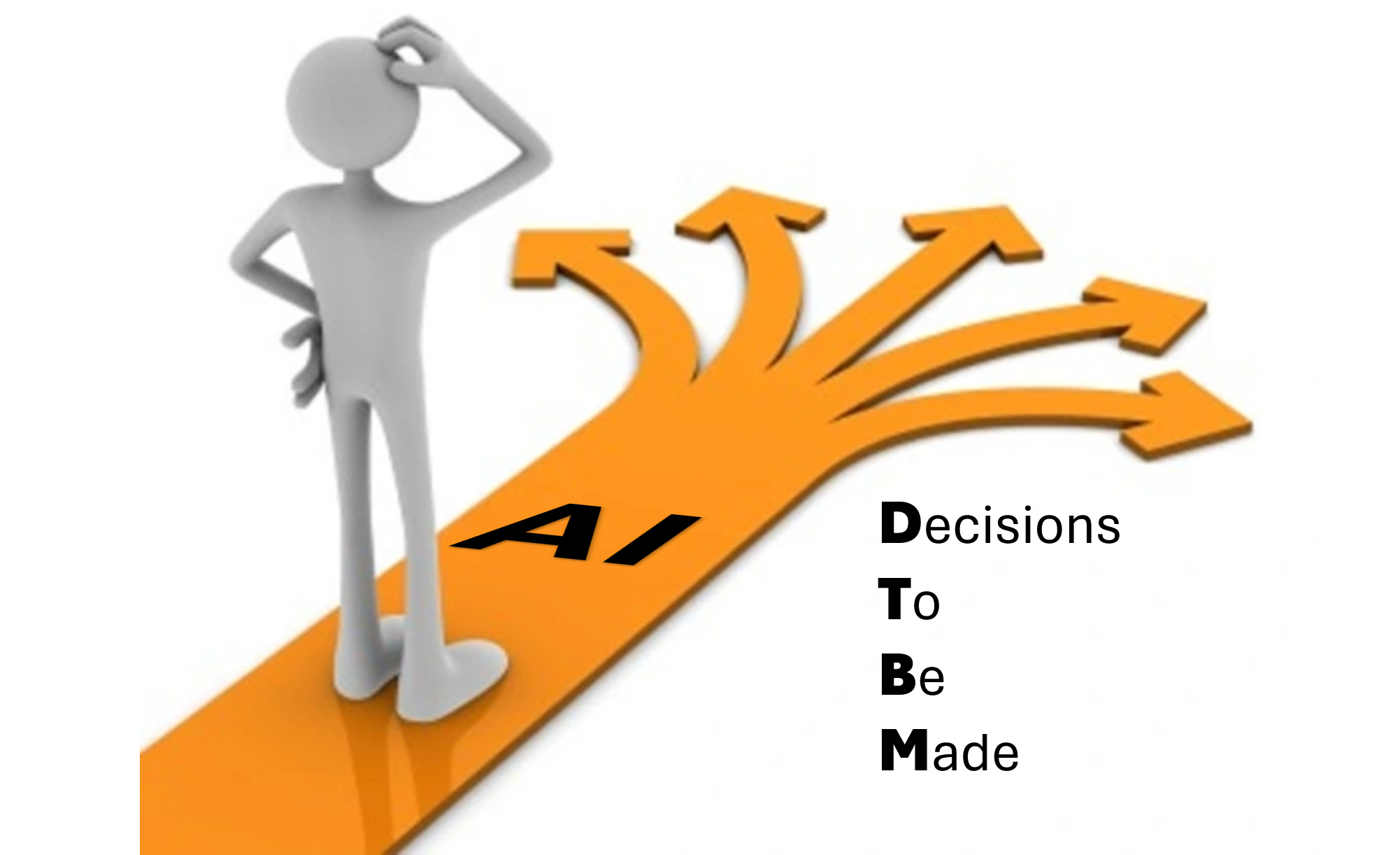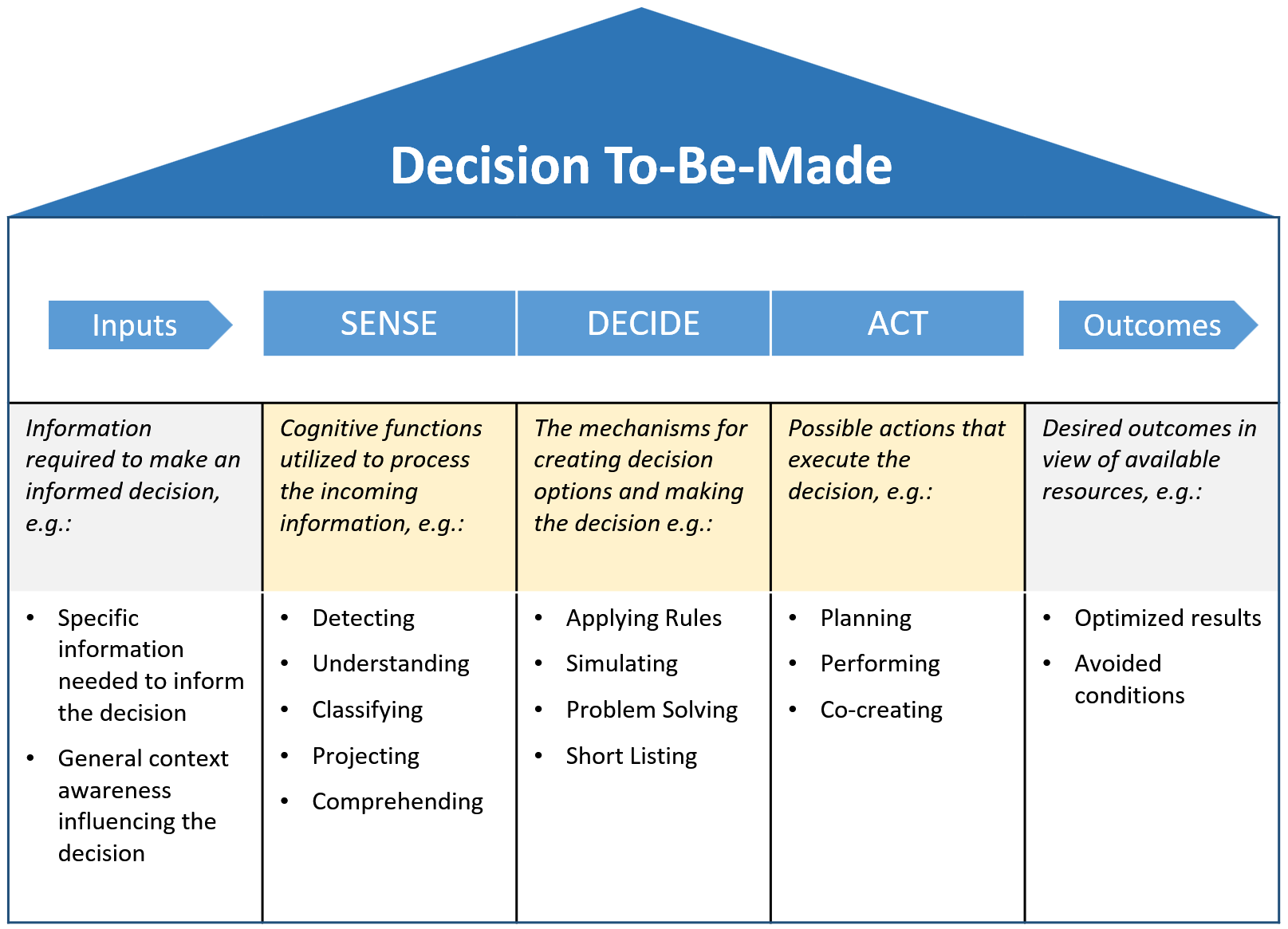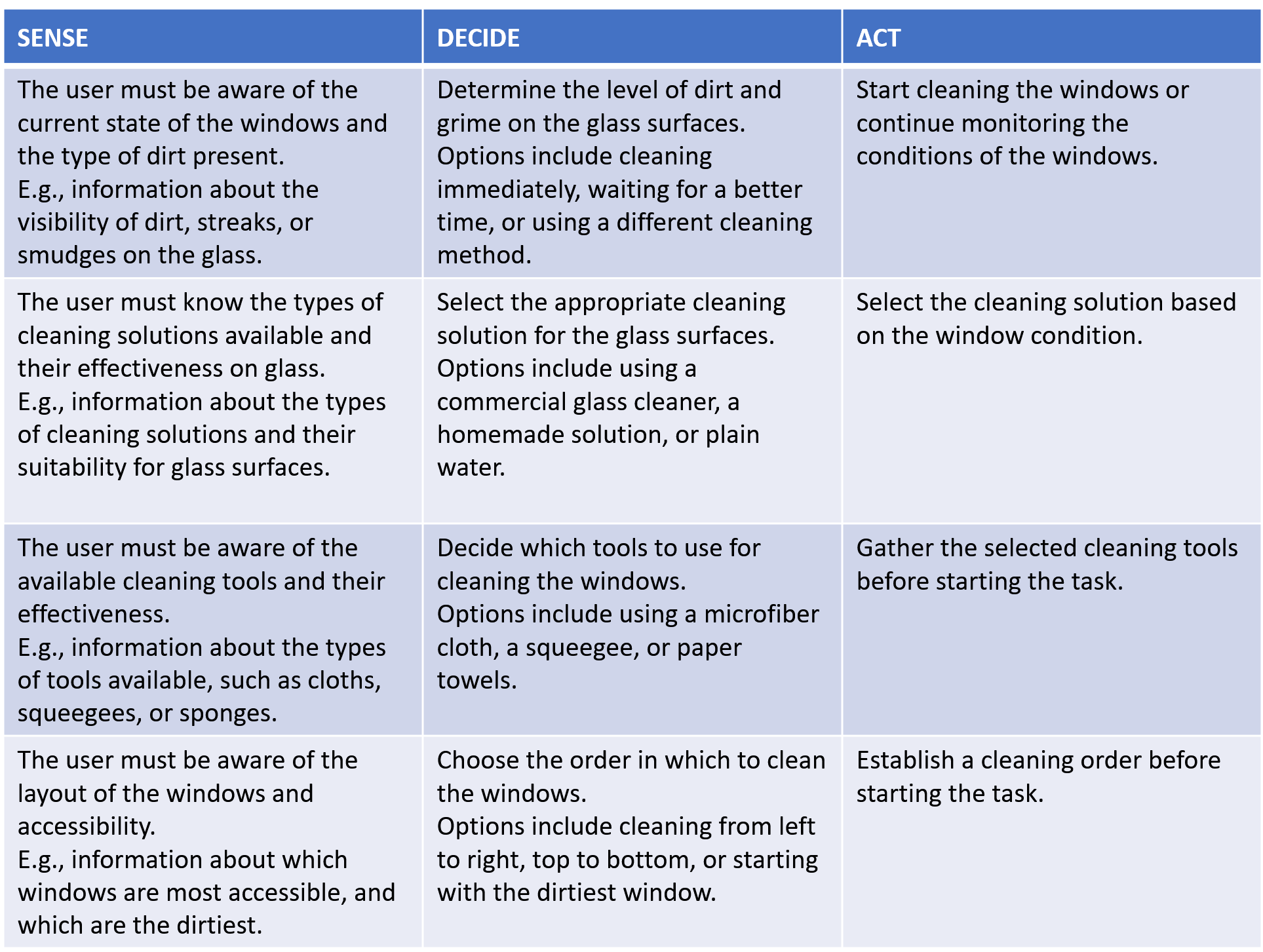
Decisions to be made (by AI agents)
From Automation to Agency
AI Agents are expected to be the next big thing once generative AI becomes a commodity. Unlike generative AI tools, AI Agents will have the capability to automate entire tasks and processes.
Traditional automation systems are replacing the human in performing repetitive work which typically consists of routine tasks that are well defined. Traditional automation systems have no awareness about the purpose of such tasks and are therefore not able to adapt themselves to environmental changes during task completion. Human-centered requirements specifications for automation systems typically describe the observable task flow for the design of systems that should replicate this observable human behavior as a machine.
In contrast, an artificial intelligent agent is designed to perform cognitive functions which traditionally were unique to humans such as comprehending information, problem solving, action planning, or generating content. AI agents equipped with these cognitive capabilities develop a level of “agency” to sense, decide, and act without human involvement. They can perceive and comprehend information on their own, make decisions based on this information and self-initiate actions to apply the decisions. This autonomous mode of operation is also called human-on-the-loop because the human is only involved as a supervisor or fallback of the AI agent and is only taking part in the task if intervention is necessary.
To achieve this level of autonomy, an AI agent must be able to perform on their own an entire decision loop end-to-end from sensing, deciding, to acting . This level of agency is very different from rigid rule-based systems design to perform repetitive actions under well-defined conditions. The design of AI agents, therefore, must focus on cognitive requirements, which are typically overseen in traditional task analysis which focuses on the flow of observable subtasks within a task. To understand the requirements for AI agents, we must therefore find a way to explicitly model the underlying cognitive processes that support the sensing, decision, and execution phase.
Decisions to be Made
To detect opportunities for employing AI agents for a given context of use, it is therefore not sufficient to focus only on activities to be performed, but on decisions to be made while performing these activities. The goal is to specify for each identified decision the cognitive requirements to execute the entire decision loop in order to understand the functional requirements of an to-be-designed AI Agent:
- What general situation awareness is needed to make informed decisions?
- What is the rationale of making the decision?
- What are the potential decision alternatives?
- What are the potential actions to enact a decision?
All these aspects are not directly observable or not discoverable in one specific instance of a task. Sometimes, making the decision is in itself the core outcome of a task (e.g. voting for a candidate in an election), but most often it is a subtask within a task flow (selecting the best applicant when hiring), or it is only a micro-decision for specifying a parameter of a resource (e.g. deciding on the right size of a cup when ordering a drink).
To explicitly capture the requirement of AI agents, we propose a decision loop canvas (see figure 1) which can be used to document the cognitive aspects of decision making.

The Decision Loop Canvas will help you to capture all relevant information to describe the information flow and decision making process of one decision:
- Information available to the agent
- information needed to establish situation awareness
- decision options and the characteristics of the decision-making process
- actions needed to execute the decision
- the desired outcome of the decision
The inner columns of the decision loop canvas (sense, decide, act) specify the human-centered requirements (cognitive requirements) for the identified decision. The left input column documents the data that are available to the agent, and the right outcome column describes the to outcome which should be optimized by the decision. This is essential to guarantee strategic alignment between the AI agent and the business needs or the personal preferences by the domain expert who traditionally made the decision.
In each of the columns of the decision loop canvas, the required information and cognitive functions must be documented that an AI agent must support in order to make correct decisions aligned with current business strategy. For example:
- knowing all undocumented facets of job applicants that influence the hiring decisions
- being aware of implicit knowledge of a human such as level of thirst to match the size of the drink or
- considering unwritten business rules that constrain decisions or redefine desired outcomes in specific situations such as ignoring costs and expediting shipments in case a key account is affected by a late shipment
The concept of explicitly modelling decisions is not new. For example, Decision Model Notation (DMN) is a formal approach of modeling decision steps within a larger Business Process Model Notation (BPMN) diagram. In a similar way, combining traditional task flow models (similar to BPMN) with a decision loop canvas (similar to DMN) complements an execution-oriented task analysis with a decision-oriented cognitive analysis.
Generating Decision Loops with the Product Context Analyzer™
Decisions-to-be-made is a new concept for requirements analysis to support the design of intelligent systems that exhibit some agency to act and make decisions based on situation awareness without humans out of the loop. The good news is that a tool already exists in form of the Product Context Analyzer that automatically identifies decisions related to a given task and generates the corresponding requirements for the decision loop.
For example, when you analyse the task of "cleaning windows in a private home" with the Product Context Analyzer, the tool generates not only a detailed task flow but also outputs a list of decisions that people must make when performing the task. Some examples of the decisions the Product Context Analyzer produces is listed in table 1:

As this example illustrates, the concept of decision loops helps to identify and specify the human-centered requirements of making decisions related to executing a specified task. These decision loop specifications serve as design input for discussing opportunities for automating human tasks with the help of AI agents and enable a product team to not only become aware of the decisions to be made, but also of the implicit knowledge required to inform the decision making process, as well as modeling the cognitive capabilities related to the decision making and action planning steps.
Discover decisions automatically in your own context of use
To identify decisions within the context of use of your product, we invite you to sign up for a free trial of the Product Context Analyzer. This will allow you to generate decision loops for the context of use of your product and generate a list of major decisions and micro decisions to be made related to the given task.